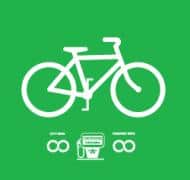
Yesterday, one of the Boston Globe columnist wrote a piece on her own cycling experiences in and around Boston. I actually ride frequently in the town of Milton which she references and unfortunately know the two riders that were hit (I’ve raced against them, they are both excellent, very experienced riders). While the article is a reasonable one for the average Globe reader, what shocked me in reading it today was the huge number of reader comments to the article, which now number over 370.
Clearly, as more cyclist take to the road to do their part for the environment, or improve their health or just save money (gas averages $4.00/gal in Boston) we are seeing a growing tension between those on the road in cars and those on bikes. No easy resolution on this one as a quick scan of the comments showed more ignorance on the part of drivers as to bicycling in general and more specifically, bike commuting. Maybe it is time for some PSAs (public service announcements) to educate both sides.
In full disclosure, here are my own cycling/commuting habits:
- I will roll through red lights after stopping and making sure there are no approaching cars. This happens about 30% of the time, the other 70% I wait for the light to turn green.
- At a light, I will ride up to the front if it is red to get in good position when the light turns green. I’ll typically do a quick sprint start to get across the intersection and in front of the traffic behind me. The main reason I do this is to get out in front of cars when they are starting off to insure that they see me. It is also to insure that I don’t get hit by some car turning right who has not signaled (yes, this has happened to me).
- I do signal when I am turning, though less so when turning right as compared to turning left.
- I virtually never ride in the wrong direction down a one-way street.
- I do “take a lane” in rotaries as I want to insure that I am clearly visible to drivers. I also go extremely quick though rotaries (typically 25mph+) so as not to be an impediment to traffic.
- I ride about 3 ft out from parked cars. I have been “doored” twice. It hurts and I don’t want to experience it again. Sometimes on the narrow streets of Boston drivers get upset with me as this 3 ft rule results in me taking a lane but when an opportunity opens up (e.g., no parked cars 30 yds or more) I pull right over.
- I don’t ride on MUT (multi-use trails) and most bike paths (they usually become MUTs anyway) as they are simply too dangerous with people on roller blades, folks walking their dogs on retractable leashes, (which always seem stretched to the limit), Moms with strollers and barely walking toddlers, etc. etc. Its the road for me.
- I always wear a helmet. I’ve cracked three due to crashes.
If you ride, be safe out there and use all of your senses to be aware of your surroundings (people riding on city streets with iPods plugged in their ears are idiots). If you are new to commuting, in time you will develop almost a 6th sense. Use it, it will keep you out of a lot of trouble down the road.




Another tip: on a one-way street, ride on the LEFT side of the street. Since most cars are SOVs (i.e. single occupancy vehicles because in practice > 75% of vehicles are occupied only by the driver) you will greatly reduce the chances of being “doored” by riding next to the empty passenger side of automobiles that you pass. Obviously, this is not possible on a 2-way street. There, when possible, “take the lane” but never ride closer than 3 feet next to cars, as John advises.
Most cyclist-car crashes occur at intersections because vehicles often don’t see the bikes, so be extra careful to avoid getting in their blind-spots. When stopped for a red light, if you can, start on IN FRONT OF the traffic, so they can see you, even if that means slightly intruding in a pedestrian space.
For a comprehensive mash-up of cyclists/ped accidents in New York City, see http://www.crashstat.org/ .